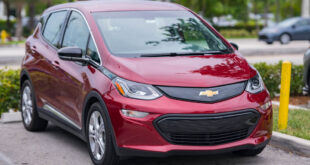Renewable Energy and EVs: Driving the Future of Sustainability Renewable energy and electric vehicles (EVs) are at the forefront of global efforts to combat climate change and reduce our dependence on fossil fuels. With advancements in technology, the integration of renewable energy into the EV ecosystem is becoming a game-changer for sustainability. This article delves into how renewable energy and EVs complement each other, their benefits, challenges, and how they shape the future of energy and transportation.
The Growing Importance of Renewable Energy and EVs
Renewable energy sources like solar, wind, and hydropower are vital for reducing greenhouse gas emissions. Similarly, EVs offer a sustainable alternative to internal combustion engine vehicles by running on electricity instead of gasoline. When EVs are powered by renewable energy, the environmental benefits are amplified, making this pairing a cornerstone of green initiatives worldwide.
How Renewable Energy Powers EVs
- Solar Energy: Solar panels can directly charge EVs, making them independent of the grid. Home solar systems with battery storage allow EV owners to harness the sun’s energy.
- Wind Energy: Wind farms contribute to the grid, providing clean electricity for EV charging stations.
- Hydropower: Hydropower plants supply consistent renewable energy, making them ideal for powering large-scale EV charging infrastructure.
Benefits of Combining Renewable Energy and EVs
- Zero Emissions: EVs powered by renewables produce no greenhouse gas emissions.
- Energy Independence: Reducing reliance on fossil fuels creates energy security.
- Cost Savings: Renewable energy reduces the operational costs of EVs over time.
- Grid Decentralization: Home-based renewable systems support decentralized power distribution.
Challenges in Integrating Renewable Energy and EVs
- Grid Stability: Increased EV adoption can strain the electricity grid, requiring upgrades.
- Energy Storage: Efficient battery systems are needed to store renewable energy for EV charging during low production periods.
- Infrastructure Costs: Building renewable energy-powered EV charging stations is capital-intensive.
- Policy and Regulation: Governments must implement supportive policies for renewable and EV synergy.
Innovative Solutions for the Future
- Vehicle-to-Grid Technology (V2G): EVs can act as mobile energy storage, feeding electricity back to the grid during peak demand.
- Smart Charging: Advanced charging systems optimize energy use based on grid capacity and renewable energy availability.
- Renewable Microgrids: Community-level renewable grids support EV charging and reduce dependence on centralized systems.
10 Tips for Using Renewable Energy and EVs
- Install solar panels at home for direct EV charging.
- Opt for public EV charging stations powered by renewables.
- Utilize time-of-use tariffs to charge EVs during off-peak hours.
- Explore V2G-compatible EVs to maximize energy efficiency.
- Invest in a home battery storage system for renewable energy.
- Choose EVs with efficient energy consumption ratings.
- Monitor your energy usage using smart apps.
- Support policies promoting renewable energy integration.
- Educate yourself on the carbon footprint of energy sources.
- Advocate for renewable energy-powered public transport.
10 FAQs About Renewable Energy and EV
- What are renewable energy sources for EVs?
Renewable sources include solar, wind, and hydropower. - Are EVs truly eco-friendly?
Yes, especially when powered by renewable energy. - How can I charge my EV using solar energy?
Install solar panels and connect them to an EV charging system. - Is wind energy reliable for EV charging?
Yes, but energy storage systems are needed to ensure consistency. - What is V2G technology?
Vehicle-to-Grid allows EVs to supply energy back to the grid. - Are there tax incentives for using renewables with EVs?
Many governments offer subsidies and tax breaks for both. - What is the lifespan of an EV battery?
EV batteries typically last 8–15 years. - Can I use hydropower for home EV charging?
Indirectly, by sourcing electricity from a hydropower-fed grid. - What are the costs of installing solar panels for EVs?
Costs vary, but government incentives often reduce the financial burden. - How does renewable energy improve EV efficiency?
It reduces the carbon footprint and operating costs of EVs.
Conclusion
Renewable energy and EV represent a transformative combination for building a sustainable future. By leveraging renewable sources like solar and wind, we can create an environmentally friendly ecosystem for transportation. However, challenges like grid infrastructure and storage capacity must be addressed to unlock their full potential.
The integration of renewable energy with EVs not only reduces emissions but also empowers individuals and communities to become energy-independent. As technology advances and policies align, this synergy will undoubtedly pave the way for a greener planet.
 oto car insurance used car repair
oto car insurance used car repair
